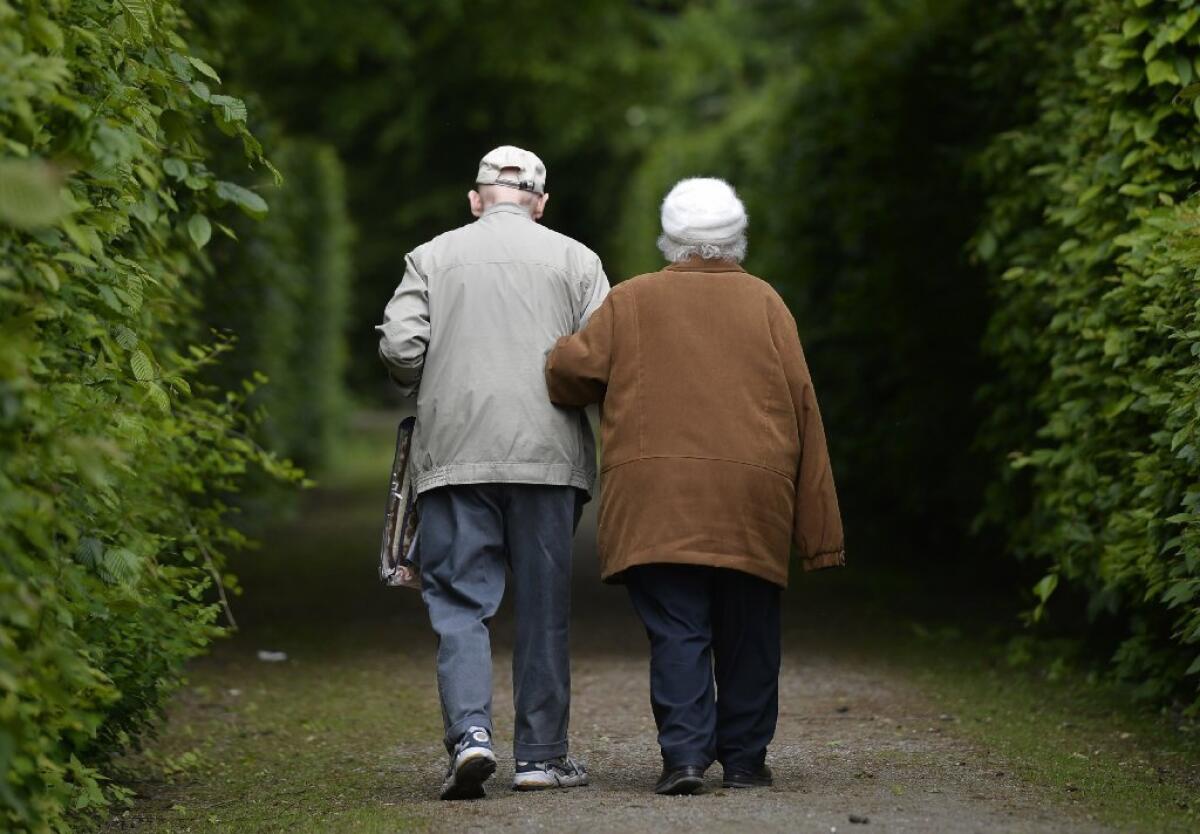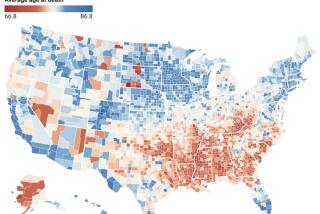Why do women outlive men? Science zeroes in on answer

We take for granted that women tend to outlive men, but a new study reveals it wasn’t always the case.
Women tend to live longer than men. But it wasn’t always that way, a new study says.
Adults born in the late 19th century were the first to see men dying at much higher rates than women. So the gender difference in life expectancy is fairly recent, and probably isn’t based on anatomy alone, researchers say.
In medical and public health circles, women’s long lives relative to men’s have often been considered “a given,” said Hiram Beltran-Sanchez, a demographer at the University of Wisconsin in Madison and the lead author of the study published this week in the Proceedings of the National Academy of Sciences. He decided to look back at population data to see whether that had always been true.
Beltran-Sanchez and his colleagues began by examining common causes of death of people going back more than 200 years. They used data from the Human Mortality Database to find information about the deaths of people born between 1800 and 1935 in 13 countries across North America and Europe. Then they combined this with data from the World Health Organization’s Mortality Database to determine death rates by cause.
The researchers focused on five major causes of death: cardiovascular disease; stroke; cancer; influenza and pneumonia; and smoking-attributable deaths, which they estimated from rates of lung cancer and other smoking-related diseases. They also concentrated on the deaths of people between the ages of 40 and 90. (They excluded younger people to minimize the effects of war, violence and accidents and to highlight the effects of chronic diseases.)
In general, men and women born in the 19th century had much shorter lives than people born in the 20th century. That’s because people who lived in the 1800s had less access to clean water and food, and they didn’t have antibiotics to help them fight infectious disease, Beltran-Sanchez said.
In that era, men and women had roughly similar life expectancies. “That was exciting to see,” Beltran-Sanchez said.
But once antibiotics, safer water and more nutritious food became available, the odds of dying in any given year between the ages of 40 and 90 fell by 0.29% for women, compared with 0.17% for men.
While these numbers are small, they add up over time - for people born between 1900 and 1935, men were two to three times more likely to die in their 50s and 60s than were their female counterparts, the researchers wrote. This gender imbalance, which Beltran-Sanchez refers to as “excess male mortality,” is caused primarily by cardiovascular disease and smoking-related deaths, he said.
In the first part of the 20th century, smoking was much more common among men than women, Beltran-Sanchez said.
By looking at data from the United Nations Food and Agriculture Organization, the team saw that the gender gap in life expectancy really opened up when people started eating more animal fats, a shift that began in adults born at the end of the 19th century in most of the countries researchers examined. Other studies suggest that men born between 1950 and 1985 eat more animal products than women do, the researchers noted.
In addition, a high-fat diet may do more damage to men than to women because dietary fat is more likely to make men gain unhealthy weight and to clog their arteries, researchers said.
These data mean the difference in life expectancy between men and women probably isn’t due to biological factors alone, Beltran-Sanchez said. And that would be good news.
“If this is something that has been triggered by lifestyle, or diet, we could potentially ameliorate it or diminish it,” he said.
For more science news, follow me on Twitter @sasha_hl and “like” Los Angeles Times Science & Health on Facebook.
ALSO:
Type 2 diabetes diminishes mental performance, but how?
In obesity, heightened imagination for smell may drive food cravings, weight gain
Heroin use and addiction are surging in the U.S., CDC report says






